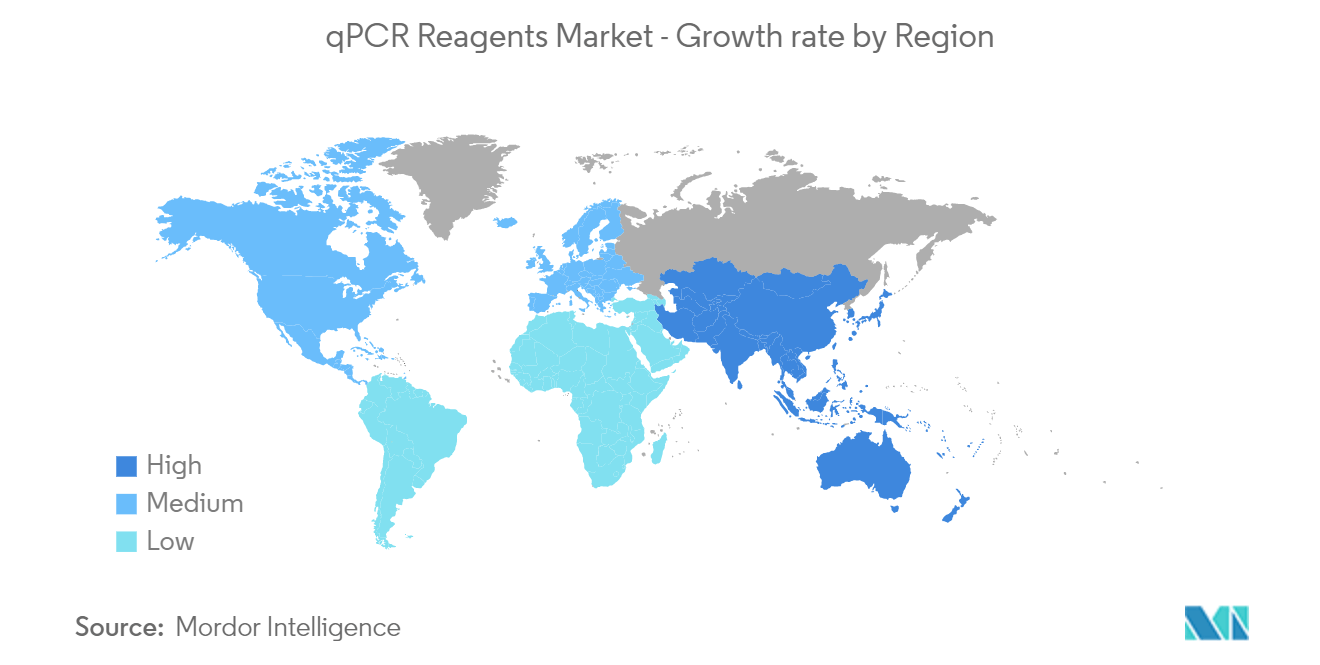Market Trends of qPCR Reagents Industry
This section covers the major market trends shaping the qPCR Reagents Market according to our research experts:
Dye-Based qPCR Reagents are Expected to Dominate the Market
The use of fluorescent DNA-binding dyes is one of the most straightforward and common qPCR approaches used by scientists. A dye is added to the reaction, and fluorescence is measured at each PCR cycle. Because the fluorescence of these dyes increases dramatically in the presence of double-stranded DNA, DNA synthesis can be monitored as an increase in fluorescent signal.
Dye-based diagnostic qualitative PCR is applied to rapidly detect nucleic acids that are diagnostic of, for example, infectious diseases, cancer, and genetic abnormalities. For instance, according to the Breast Cancer Factsheet Now 2021, around 55,000 women and 370 men in the United Kingdom are diagnosed with breast cancer yearly. Breast cancer has claimed the lives of an estimated 600,000 people in the United Kingdom. This figure is expected to climb to 1.2 million by 2030. Thus, the growing burden of cancer diseases is expected to propel the segment's growth.
Additionally, product launches by the market players are expected to support the market expansion over the forecast period. For instance, in December 2021, Biotium released 'EvaRuby' Dye for qPCR and HRM. This spectrally unique red fluorescent intercalating dye can be incorporated into probe-based qPCR assays, expanding multiplexing options for probe-based qPCR. EvaRuby Dye is compatible with ~470 nm excitation and ~610 nm emission filters.
Thus, all aforementioned factors with product launches are expected to boost segment growth over the forecast period.

North America is Expected to Hold a Significant Market Share Over the Forecast Period
North America holds the major market share in the PCR reagent market. The rising incidence of diseases, the elderly population (aging), and technological advancements are attributed to market growth. Especially in recent times, pandemics have also boosted the qPCR reagent market. For instance, according to Cancer Facts and Figures 2022, published in January 2022 by the American Cancer Society, an estimated 1.9 million new cancer cases will be diagnosed in 2022, among which prostate cancer is estimated to be 186,670, followed by 169,870 cases of lung cancer, and 144,490 cases of female breast cancer. The increased prevalence of cancer and the high burden of other chronic diseases increase the demand for accurate diagnosis and treatment. This is likely to increase the qPCR reagent, ultimately boosting the market growth.
Furthermore, according to statistics published by the Government of Canada and released in November 2021, about 229,200 Canadians were diagnosed with cancer in 2021, and prostate cancer is expected to remain the most diagnosed cancer, accounting for 46% of all cancer diagnoses in 2021. According to the same source, breast cancer affects one out of every eight women at some point in their lives. Thus, as the number of cancer cases rises, so does the demand for early diagnosis, driving demand for qPCR reagents over the projection period.
Additionally, product launches by the market players are expected to support market growth. For instance, in February 2022, New England Biolabs (NEB) released the LyoPrime Luna Probe One-Step RT-qPCR Mix with UDG, its first lyophilized product manufactured by Fluorogenics. This lyophilized master mix has the same adaptable characteristics and strong performance as the previously published liquid 4X mix, allowing for sensitive, linear real-time detection of target RNA sequences in a room temperature-stable format.
Thus, all aforementioned factors, such as the growing burden of infectious diseases, are expected to boost the growth of the market in the region.


